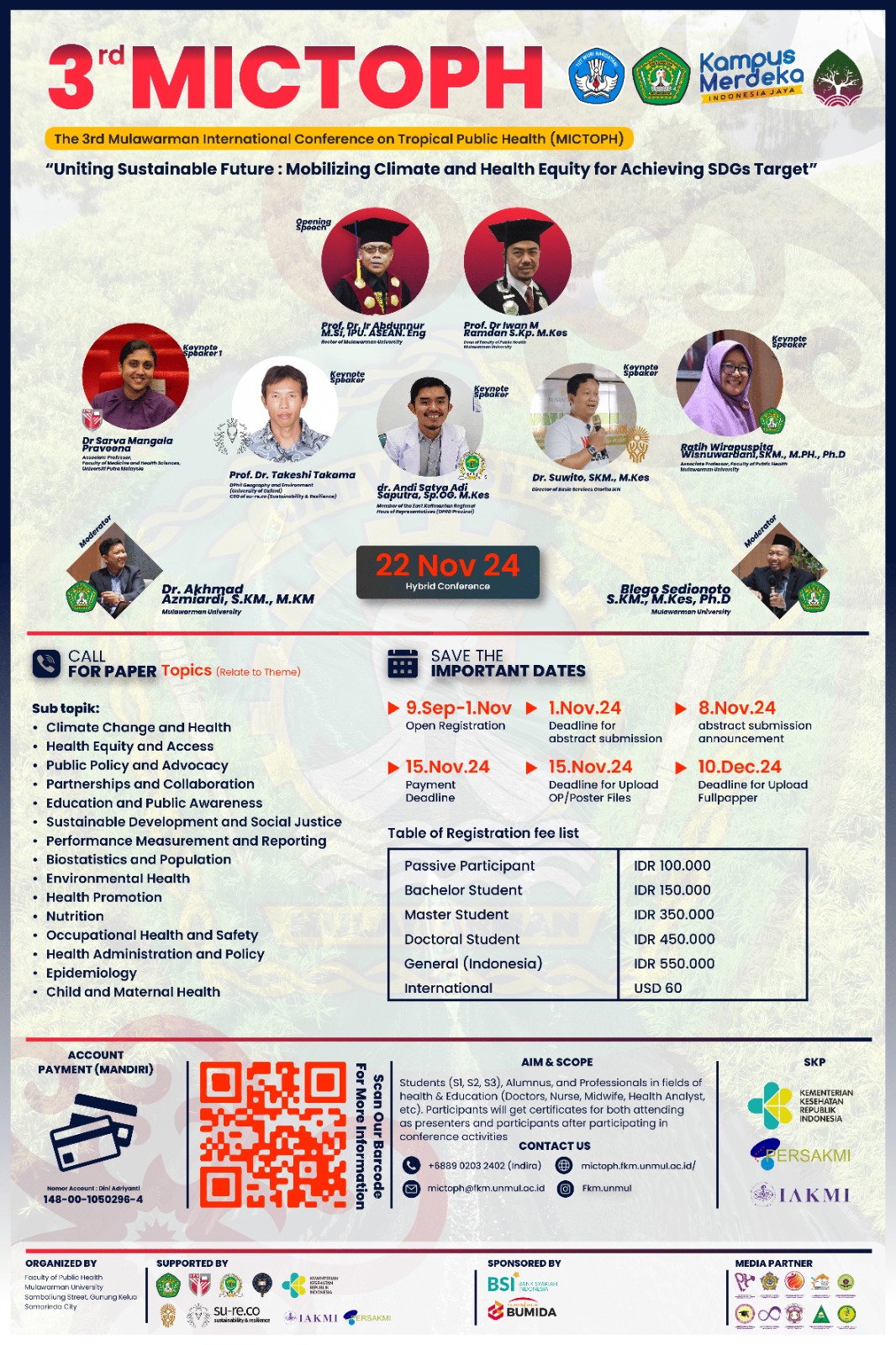The Relationship between Age, Employment Status, Gender, Linezolid Use, and HIV Status on the Survival Duration of Short-Term Treated MDR-TB Patients
Keywords:
MDR-TB survival, Employment status, Gender, Short-term treatment, Linezolid, HIVAbstract
The increasing prevalence of multidrug-resistant tuberculosis (MDR-TB) presents a major public health challenge, particularly due to its complex treatment and varied patient outcomes. Factors such as age, employment status, gender, Linezolid use, and HIV status are thought to influence survival rates among MDR-TB patients, especially those undergoing short-term treatment regimens. Objective : This study aims to evaluate the relationship between these demographic and clinical variables and the survival duration of MDR-TB patients on short-course therapy. Research Methods/ Implementation Methods : This study used a retrospective cohort design, analysing medical records of MDR-TB patients who received a short-term treatment regimen. A total 38 patients were selected in this study. This study conducted in 2021-2023 at several hospital that provide integrated management of drug resistant tuberculosis control (MTPTRO) program in central java, Indonesia. Key demographic and clinical data, including age, employment status, gender, Linezolid (Lzd) use, HIV status, and survival duration status, were collected. Survival status defined as less than one month and over than one month to death. A logistic regression analysis was performed to analyse the data using SPSS version 15. Results : Employment status and gender were significant predictors of survival, with employed patients showing a higher likelihood of extended survival (Exp(B) = 38.884, 95% CI: 2.302–656.853, p = 0.011) compared to unemployed patients. Additionally, female patients demonstrated better survival outcomes compared to male patients (Exp(B) = 0.031, 95% CI: 0.002–0.448, p = 0.011). Age showed a borderline association with survival, suggesting that older age may be linked to decreased survival, though this was not statistically significant (Exp(B) = 8.668, 95% CI: 0.983–76.397, p = 0.052). Similarly, HIV status indicated a possible association with shorter survival duration, though it did not reach significance (Exp(B) = 5.860, 95% CI: 0.810–42.384, p = 0.080). The timing of treatment initiation following diagnosis also showed a trend toward influencing survival, with earlier initiation possibly improving outcomes (Exp(B) = 8.641, 95% CI: 0.823–90.677, p = 0.072). In contrast, the use of Linezolid (Lzd) did not have a statistically significant effect on survival duration in this cohort (Exp(B) = 0.365, 95% CI: 0.028–4.750, p = 0.441). Conclusion/Lesson Learned : Employment status and gender significantly impact the survival duration of MDR-TB patients on short-term treatment, with employed and female patients showing better outcomes. Although age, HIV status, and early treatment initiation showed potential associations with survival, these factors were not statistically significant.





